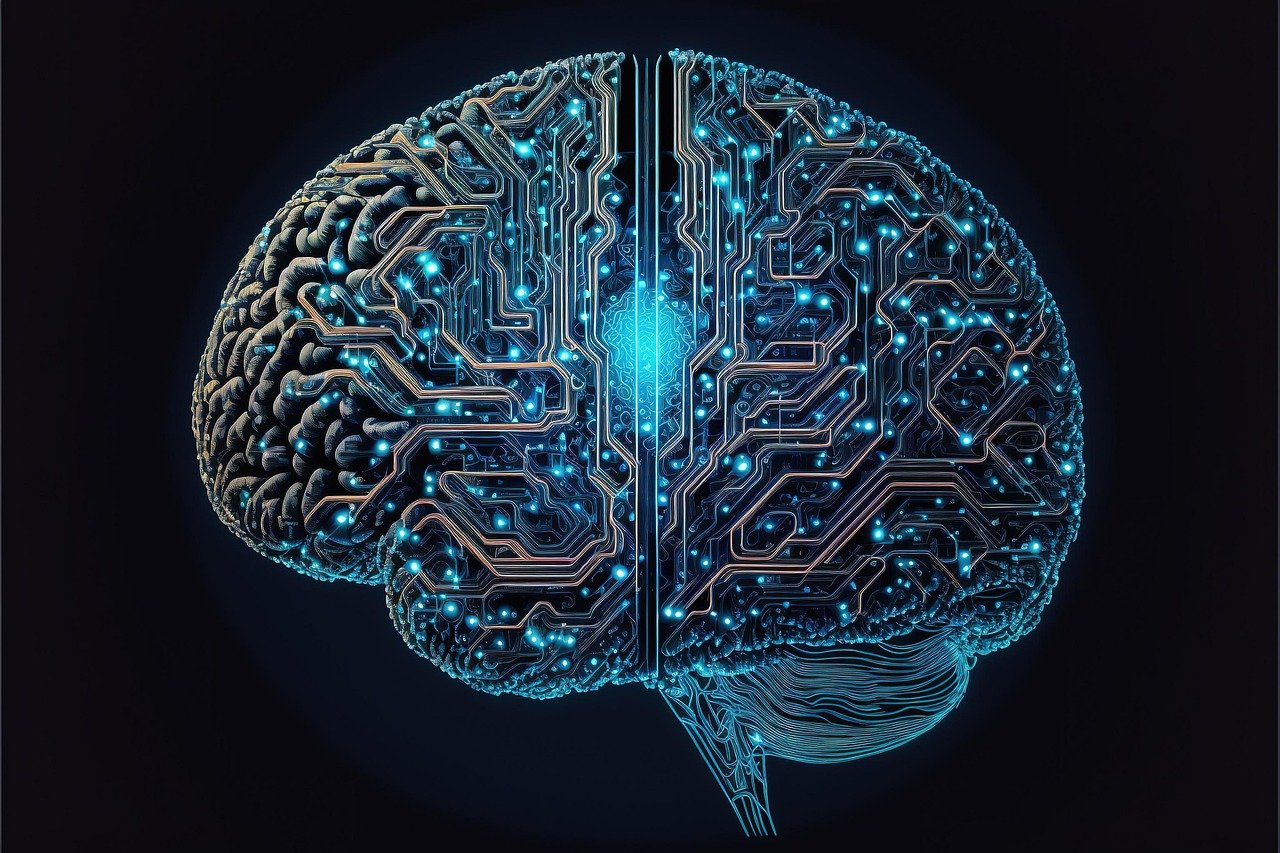Machine learning, once a futuristic fantasy, is now a cornerstone of modern technology, influencing everything from the recommendations you see on Netflix to the fraud detection systems protecting your bank account. But what exactly is machine learning, and how does it work? This comprehensive guide breaks down the complexities of machine learning, explores its applications, and provides a practical understanding of this powerful field.
What is Machine Learning?
Defining Machine Learning
Machine learning (ML) is a subset of artificial intelligence (AI) that focuses on enabling computer systems to learn from data without being explicitly programmed. Instead of relying on pre-defined rules, ML algorithms identify patterns in data and use those patterns to make predictions or decisions. The core idea is to allow computers to improve their performance on a specific task over time, with experience gained from data.
- Key aspects of machine learning:
Learning from data: ML algorithms analyze vast datasets to uncover hidden patterns and relationships.
Making predictions: Based on the learned patterns, ML models can predict future outcomes or classify new data points.
Improving over time: The more data an ML model processes, the more accurate its predictions become.
Automation: ML automates complex tasks that would be difficult or impossible to handle with traditional programming techniques.
Machine Learning vs. Traditional Programming
Traditional programming involves writing explicit instructions for a computer to follow. Machine learning, in contrast, focuses on teaching the computer how to learn from data, so that it can solve problems that are too complex or too dynamic for traditional programming.
| Feature | Traditional Programming | Machine Learning |
|——————-|———————————————–|—————————————————|
| Approach | Explicitly programmed instructions | Learns from data without explicit programming |
| Problem Type | Well-defined problems with known solutions | Complex, ill-defined problems with unknown solutions |
| Adaptability | Requires manual code updates for changes | Adapts automatically to new data |
| Data Dependency | Less reliant on large datasets | Heavily reliant on large datasets |
Types of Machine Learning
There are several major types of machine learning algorithms, each suited to different types of problems:
- Supervised Learning: The algorithm is trained on labeled data, where the input features and the desired output are known. The goal is to learn a mapping function that can accurately predict the output for new, unseen input. Examples include:
Classification: Predicting a category or class label (e.g., spam detection, image recognition).
Regression: Predicting a continuous value (e.g., predicting house prices, forecasting sales).
- Unsupervised Learning: The algorithm is trained on unlabeled data, where only the input features are known. The goal is to discover hidden structures or patterns in the data. Examples include:
Clustering: Grouping similar data points together (e.g., customer segmentation, anomaly detection).
Dimensionality Reduction: Reducing the number of features while preserving important information (e.g., feature extraction, data visualization).
Association Rule Mining: Discovering relationships between items in a dataset (e.g., market basket analysis).
- Reinforcement Learning: An agent learns to make decisions in an environment to maximize a reward. The agent receives feedback in the form of rewards or penalties for its actions. Examples include:
Game playing: (e.g., training AI to play chess or Go).
Robotics: Controlling robot movements and behaviors.
Resource management: Optimizing the allocation of resources in a system.
Machine Learning Algorithms: A Closer Look
Supervised Learning Algorithms
- Linear Regression: Used for predicting a continuous target variable based on a linear relationship with one or more predictor variables. Example: Predicting sales based on advertising spend.
- Logistic Regression: Used for predicting the probability of a binary outcome (e.g., 0 or 1, true or false). Example: Predicting whether a customer will click on an ad.
- Support Vector Machines (SVM): Used for classification and regression tasks. SVM aims to find the optimal hyperplane that separates data points into different classes with the largest margin.
- Decision Trees: Tree-like structures that use a series of rules to classify or predict data points. Easy to interpret and visualize.
- Random Forests: An ensemble learning method that combines multiple decision trees to improve accuracy and reduce overfitting.
- K-Nearest Neighbors (KNN): Classifies a data point based on the majority class of its k nearest neighbors.
Unsupervised Learning Algorithms
- K-Means Clustering: Partitions data points into k clusters, where each data point belongs to the cluster with the nearest mean (centroid).
- Hierarchical Clustering: Builds a hierarchy of clusters by iteratively merging or splitting clusters.
- Principal Component Analysis (PCA): A dimensionality reduction technique that identifies the principal components of the data, which are the directions of maximum variance.
- Association Rule Mining (Apriori algorithm): Identifies frequent itemsets and association rules in a transactional database.
Example: Predicting Customer Churn with Supervised Learning
A telecommunications company wants to predict which customers are likely to churn (cancel their service). They can use a supervised learning algorithm, such as logistic regression or a random forest, to build a churn prediction model.
Applications of Machine Learning
Machine learning is transforming industries across the board, driving innovation and efficiency.
Healthcare
- Diagnosis and treatment: ML algorithms can analyze medical images to detect diseases like cancer, predict patient outcomes, and personalize treatment plans.
- Drug discovery: ML can accelerate the drug discovery process by identifying potential drug candidates and predicting their efficacy.
- Personalized medicine: ML can tailor treatment plans to individual patients based on their genetic makeup, lifestyle, and medical history.
- Example: IBM Watson Oncology assists doctors in making evidence-based treatment decisions for cancer patients.
Finance
- Fraud detection: ML algorithms can identify fraudulent transactions in real-time, protecting financial institutions and customers.
- Risk management: ML can assess credit risk, predict market trends, and optimize investment portfolios.
- Algorithmic trading: ML can automate trading strategies and execute trades based on market conditions.
- Example: Banks use ML to detect suspicious transactions and prevent credit card fraud.
Retail
- Recommendation systems: ML algorithms can recommend products to customers based on their past purchases, browsing history, and preferences.
- Personalized marketing: ML can tailor marketing campaigns to individual customers based on their demographics, interests, and purchase history.
- Supply chain optimization: ML can optimize inventory levels, forecast demand, and improve logistics.
- Example: Amazon’s recommendation engine suggests products based on your browsing and purchase history.
Manufacturing
- Predictive maintenance: ML algorithms can predict when equipment is likely to fail, allowing manufacturers to schedule maintenance proactively.
- Quality control: ML can automate quality control processes by detecting defects in products.
- Process optimization: ML can optimize manufacturing processes to improve efficiency and reduce costs.
- Example: Factories use ML to predict machine failures and optimize production schedules.
Natural Language Processing (NLP)
- Chatbots: Answering customer questions and providing support.
- Machine translation: Translating text from one language to another.
- Sentiment analysis: Determining the emotional tone of text (positive, negative, or neutral).
- Speech recognition: Converting spoken language into text.
Getting Started with Machine Learning
Choosing a Programming Language and Framework
- Python: The most popular language for machine learning due to its extensive libraries and ease of use.
- R: A statistical programming language widely used in data analysis and machine learning.
Popular Machine Learning Frameworks:
- TensorFlow: Developed by Google, a powerful and flexible framework for building and deploying ML models.
- Keras: A high-level API that simplifies the process of building and training neural networks, running on top of TensorFlow or Theano.
- PyTorch: Developed by Facebook, another popular framework known for its dynamic computation graph and ease of use for research and development.
- Scikit-learn: A comprehensive library for various machine learning tasks, including classification, regression, clustering, and dimensionality reduction. It’s easy to use and well-documented, making it a great starting point.
Learning Resources
- Online Courses: Coursera, edX, Udacity, and DataCamp offer a wide range of machine learning courses and specializations.
- Books: “Hands-On Machine Learning with Scikit-Learn, Keras & TensorFlow” by Aurélien Géron, “Pattern Recognition and Machine Learning” by Christopher Bishop, and “The Elements of Statistical Learning” by Hastie, Tibshirani, and Friedman are excellent resources.
- Tutorials and Documentation: The official documentation for machine learning libraries like Scikit-learn, TensorFlow, and PyTorch provides detailed explanations and examples.
- Open Source Projects: Contributing to open-source machine learning projects is a great way to gain practical experience and learn from other developers.
- Kaggle: A platform for data science competitions and collaborations, allowing you to apply your skills to real-world problems and learn from the community.
Practical Tips for Success
- Start with the basics: Understand the fundamentals of machine learning before diving into complex algorithms.
- Focus on data: Data quality is crucial for machine learning. Spend time cleaning, preprocessing, and understanding your data.
- Experiment with different algorithms: There is no one-size-fits-all algorithm. Experiment with different algorithms and techniques to find the best solution for your problem.
- Evaluate your models: Use appropriate evaluation metrics to assess the performance of your models and identify areas for improvement.
- Stay up-to-date: Machine learning is a rapidly evolving field. Keep learning and exploring new techniques and technologies.
Conclusion
Machine learning is a powerful and versatile technology with the potential to transform industries and solve complex problems. By understanding the fundamentals of machine learning, exploring its applications, and leveraging the available resources, you can harness the power of ML and unlock new opportunities for innovation and growth. As the field continues to evolve, embracing lifelong learning and experimentation will be crucial for success in the exciting world of machine learning.



